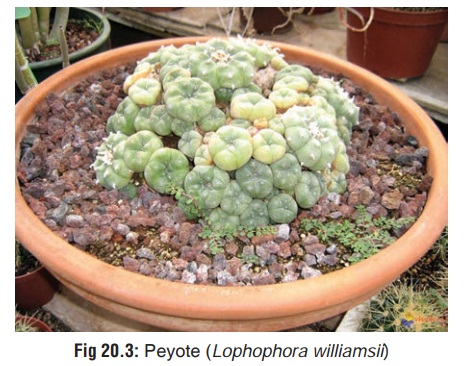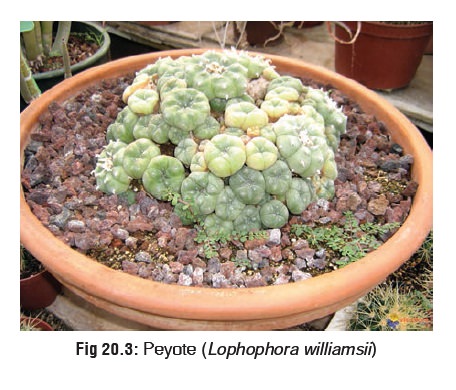Chapter: Modern Medical Toxicology: Neurotoxic Poisons: Hallucinogens (Psychedelic Drugs)
Mescaline - Hallucinogen(Psychedelic Drug)

MESCALINE
Mescaline
is the principal hallucinogenic agent among several alkaloids present in
peyote, a small bluish green spineless cactus that grows in dry and rocky areas
of southwestern United States and northern Mexico. The scientific name of the
cactus is Lophophora williamsii (Fig 20.3). The terms “peyote
buttons”and “mescal buttons” refer to the round fleshy tops of the cactus which
have been sliced off and dried. Some Native American churches use these buttons
in their religious ceremonies. Each button contains the equivalent of 45 mg of
mescaline. It is rapidly absorbed on ingestion.

Clinical (Toxic) Features
Ingestion of 6 to 12 mescal buttons is required to induce a
hallucinatory experience. Symptoms usually resolve in about 12 hours after
ingestion.
· Phase of GI distress: (30 to 60 minutes)—Nausea, vomiting, diarrhoea (rare).
·
Phase of sensory manifestations: (4
to 6 hours) —Vivid visual hallucinations, emotional lability, anxiety, panic
reactions
Treatment
Involves
provision of a quiet dark environment, and calm reassurance. Diazepam may be
given orally or intravenously.
Related Topics